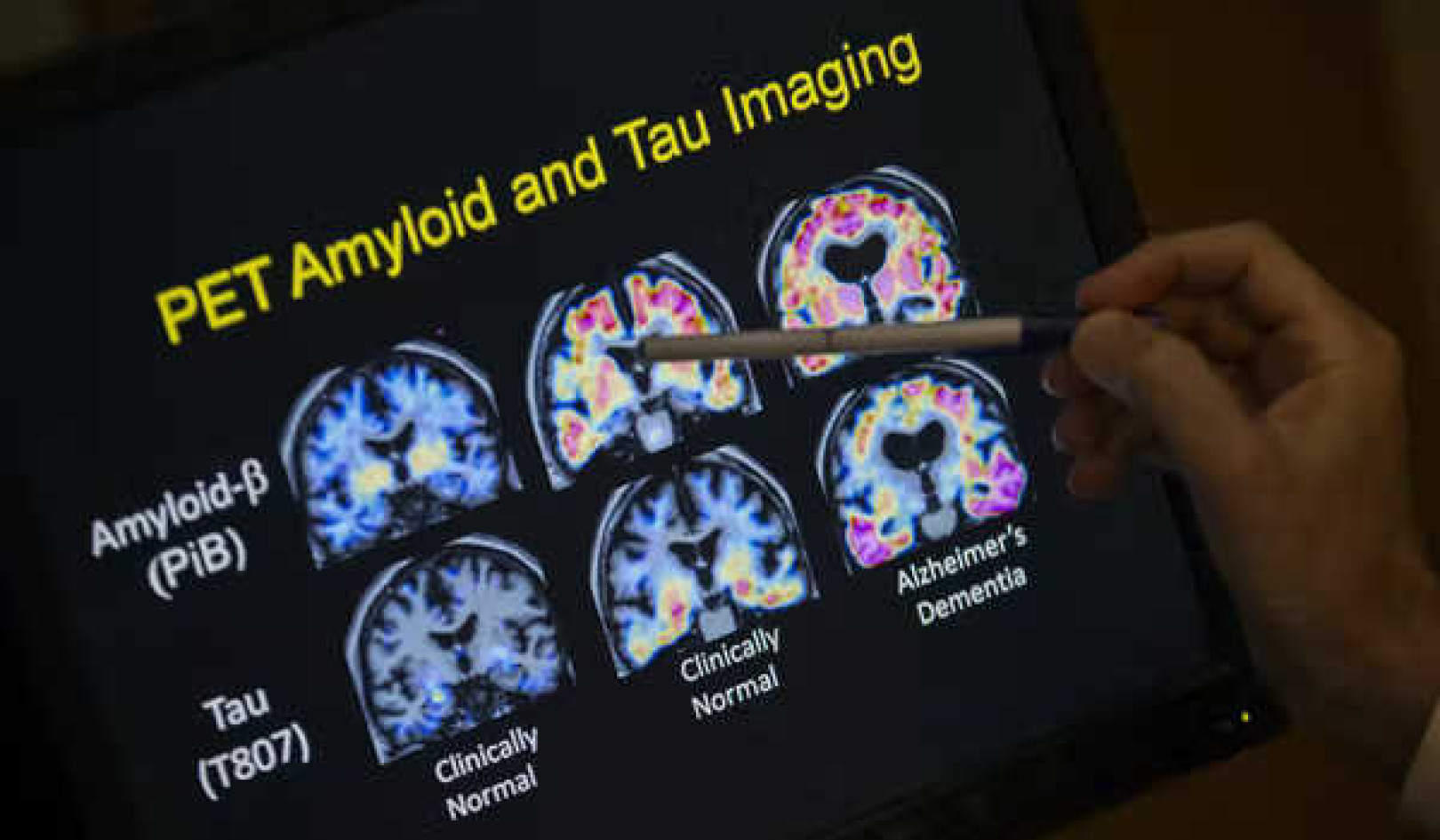
Uncorrected hearing loss is an important and modifiable feature of mid- and later-life aging that can hasten brain decline. Modern hearing aids are easy to use and can help older people maintain social ties and reduce age-related cognitive decline. AlexRaths/iStock via Getty Images Plus
In this Article:
- How you can prevent dementia by addressing modifiable risk factors.
- The 14 key risk factors for dementia prevention.
- How can hearing loss and high cholesterol increase dementia risk?
- Lifestyle changes that can reduce dementia risk by 45%
- What steps can communities and policymakers take to prevent dementia?

Dementia Risk Factors: How to Reduce Your Risk by 45%
by Eric B. Larson, University of Washington and Laura Gitlin, Drexel University.
Nearly half of all dementia cases could be delayed or prevented altogether by addressing 14 possible risk factors, including vision loss and high cholesterol.
That is the key finding of a new study that we and our colleagues published in the journal The Lancet.
Dementia, a rapidly increasing global challenge, affects an estimated 57 million worldwide, and this number is expected to increase to 153 million by 2050 worldwide. Although the prevalence of dementia is on the decline in high-income countries, it continues to increase in low- and middle-income countries.
This third updated report of the Lancet Commission on Dementia offers good news and a strong message: Policymakers, clinicians, individuals and families can be ambitious about prevention and reduce dementia risk; and for those living with dementia and their caregivers, support their quality of life using evidence-based approaches.
The new report confirms 12 previously identified potentially modifiable risk factors from two previous reports, published in 2017 and 2020. It also offers new evidence supporting two additional modifiable risk factors: vision loss and high levels of low-density lipoprotein (LDL) cholesterol, often called “bad” cholesterol.
Our study of published evidence found that collectively, addressing 14 modifiable risk factors could potentially reduce the prevalence of dementia by 45% worldwide. Even greater risk reductions could be possible in low- and middle-income countries and for people with low income in higher-income countries given the higher prevalence of dementia, health disparities and risk factors in these populations.
The report further indicates that reducing these 14 risks can increase the number of healthy years of life and reduce the length of time with poor health in people with dementia.
Additionally, the report cites clinical trials showing that nonpharmacological approaches, such as using activities tailored to interests and abilities, can reduce dementia-related symptoms and improve quality of life.
We are a general internist and an applied sociologist and intervention scientist, and our work focuses on memory and wellness in older adults. Together with 25 other internationally recognized dementia experts under the leadership of psychiatry professor Dr. Gill Livingston, we carefully reviewed the evidence to derive recommendations for prevention, intervention and care.
Why it matters
The rapid growth of aging populations worldwide is a triumph of better public and personal health throughout the entire life span. Yet, given the lack of a dementia cure, this report highlights the importance of prevention as well as supporting quality of life for those with a dementia diagnosis.
In the new report, our team proposed an ambitious program for preventing dementia that could be implemented at the individual, community and policy levels and across the life span from early life through mid and late life. The key points include:
- In early life, improving general education.
- In midlife, addressing hearing loss, high LDL cholesterol, depression, traumatic brain injury, physical inactivity, diabetes, smoking, hypertension, obesity and excessive alcohol.
- In later life, reducing social isolation, air pollution and vision loss.
Together, these add up to the Lancet Commission on Dementia’s estimate that 45% of dementia risk can be reduced. And an abundance of new research shows that when risk factors are addressed, such as exposure to air pollution, they are linked with improved cognition and likely reduction of dementia risk.
New evidence supports the notion that in high-income countries, reducing dementia risk can translate to more healthy years, years free of dementia and a shorter duration of ill health for people who develop dementia.
What still isn’t known
The 45% reduction in dementia risk across the world’s population is based on a calculation that assumes that risk factors are causal and can be eliminated. It shows how dementia prevention is critical and the impact it would have on individuals and families.
The commission emphasized the need for more research to identify additional risk factors, test risk factor changes in clinical trials, provide guidance for public health efforts, and identify and evaluate strategies for implementing and scaling evidence-based programs that support people with dementia and caregivers.
The updated report has worldwide public health and research impact and is being widely disseminated. It serves as a guideline to clinicians and policymakers and outlines new research directions.
The Research Brief is a short take on interesting academic work.![]()
Eric B. Larson, Affiliate Professor of Medicine, UW School of Medicine, University of Washington and Laura Gitlin, Dean Emerita and Distinguished Professor of Nursing and Health, Drexel University
Article Recap:
This article explores the findings from a global report indicating that nearly half of dementia cases could be prevented by addressing 14 modifiable risk factors. These include hearing loss, high cholesterol, and physical inactivity, among others. By making lifestyle adjustments and supporting community-wide initiatives, individuals and policymakers can help reduce dementia rates and improve quality of life for those at risk.
This article is republished from The Conversation under a Creative Commons license. Read the original article.

Related Books:
The New Aging: Live Smarter Now to Live Better Forever
by Dr. Eric B. Larson
This book offers practical advice for healthy aging, including tips for physical and cognitive fitness, social engagement, and finding purpose in later life.
Click for more info or to order
The Blue Zones Kitchen: 100 Recipes to Live to 100
by Dan Buettner
This cookbook offers recipes inspired by the diets of people in the world's "blue zones," where residents commonly live to 100 or older.
Click for more info or to order
Aging Backwards: Reverse the Aging Process and Look 10 Years Younger in 30 Minutes a Day
by Miranda Esmonde-White
The author offers a series of exercises and lifestyle changes to promote physical fitness and vitality in later life.
Click for more info or to order
The Longevity Paradox: How to Die Young at a Ripe Old Age
by Dr. Steven R. Gundry
This book offers advice on healthy aging, including tips for diet, exercise, and stress management, based on the latest research in longevity science.
Click for more info or to order
The Aging Brain: Proven Steps to Prevent Dementia and Sharpen Your Mind
by Timothy R. Jennings, MD
The author offers a guide for maintaining cognitive health and preventing dementia in later life, including tips for diet, exercise, and stress management.























